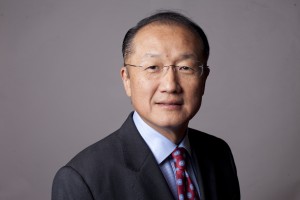 The World Bank has projected 4.8 percent growth for Ghana this year, as against 3.9 percent estimate by the government.
The World Bank has projected 4.8 percent growth for Ghana this year, as against 3.9 percent estimate by the government.
In its latest Global Economic Prospects (GEP) report, the bank maintained that developing countries, including Ghana, grew by 4.4 percent in 2014 and is expected to edge up to 4.8 percent in 2015, strengthening to 5.3 and 5.4 percent in 2016 and 2017, respectively.
The latest report released yesterday noted that after growing by an estimated 2.6 percent in 2014, the global economy is projected to expand by 3 percent this year, 3.3 percent in 2016 and 3.2 percent in 2017, predicts the Bank’s twice-yearly flagship.
The bank however warned that ; “the outlook is subject to significant downside risks arising from a renewed spread of the Ebola epidemic, violent insurgencies, lower commodity prices, and volatile global financial conditions”.
It therefore called for policy priorities which should include a need for budget restraint for some countries in the region and a shift of spending to increasingly productive ends, as infrastructure constraints are acute.
Project selection and management could be improved with greater transparency and accountability in the use of public resources, according to the bank.
The World Bank Group President Jim Yong Kim added that Ghana and other developing countries need to judiciously deploy their resources to support social programmes with a laser-like focus on the poor and undertake structural reforms that invest in people.
It is also critical for countries to remove any unnecessary roadblocks for private sector investment. The private sector is by far the greatest source of jobs and that can lift hundreds of millions of people out of poverty, according to him.
Underneath the fragile global recovery lie increasingly divergent trends with significant implications for global growth. Activity in the United States and the United Kingdom is gathering momentum as labor markets heal and monetary policy remains extremely accommodative.
But the recovery has been sputtering in the Euro Area and Japan, as legacies of the financial crisis linger.
China, meanwhile, is undergoing a carefully managed slowdown with growth slowing to a still-robust 7.1 percent this year (7.4 percent in 2014), 7 percent in 2016 and 6.9 percent in 2017. And the oil price collapse will result in winners and losers.
Risks to the outlook remain tilted to the downside, due to four factors. First is persistently weak global trade. Second is the possibility of financial market volatility as interest rates in major economies rise on varying timelines.
Third is the extent to which low oil prices strain balance sheets in oil-producing countries. Fourth is the risk of a prolonged period of stagnation or deflation in the Euro Area or Japan.
Worryingly, the stalled recovery in some high-income economies and even some middle-income countries may be a symptom of deeper structural malaise, said Kaushik Basu, World Bank Chief Economist and Senior Vice President.
As population growth has slowed in many countries, the pool of younger workers is smaller, putting strains on productivity. But there are some silver linings behind the clouds.
The lower oil price, which is expected to persist through 2015, is lowering inflation worldwide and is likely to delay interest rate hikes in rich countries.
African Eye News.com





